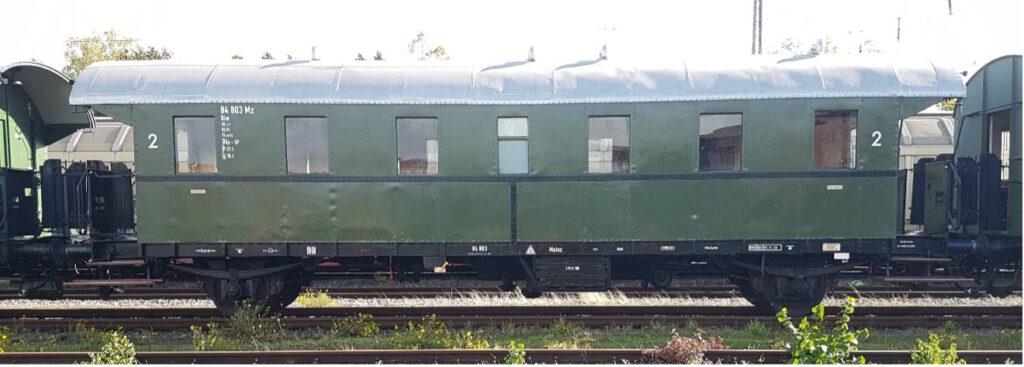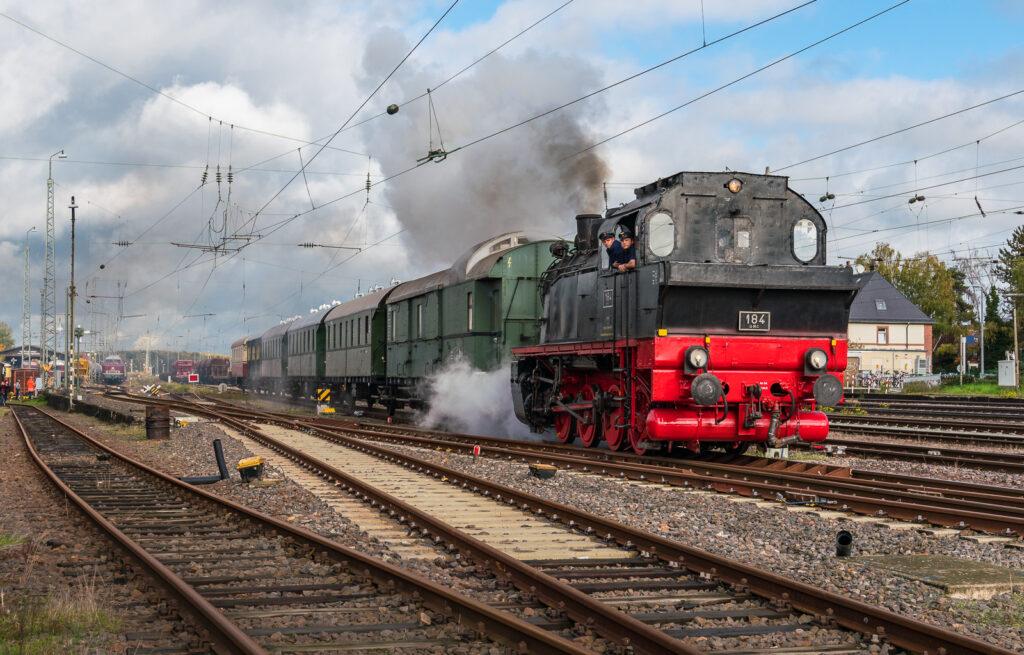
90 years of operation, but also damage due to the effects of weather and vandalism, left their mark. It was therefore necessary to carry out a fundamental overhaul as part of the due general inspection. In the process, care was taken to reuse as many elements as possible in their original condition.
After recording all the existing damage, the first thing to do was to dismantle everything that needed to be replaced or reworked.
All components of the brake system and the chassis were cleaned and measured. Several bolts and bearing rings had to be made new. The brake valves were also sent to a specialist company for overhaul. In the end, everything had to be reassembled and checked during the technical inspection.
Work was also done on the electrical systems. The switchboard for the lights had been lost over the years and was cast from an identical car. In addition to the installation of new batteries, fuses and lamps, the function of the generator had to be tested. For this purpose, an already historic stationary testing device from the museum’s stock was used. It still works reliably.
There was also a lot to do on the exterior. The roof was patched and filled. Likewise, large areas of rust on the panelling were removed, new sheet metal was inserted and also filled. After everything had been sanded down, priming and three new coats of paint were applied. As the access steps had become rotten over the years, they were replaced.
New flooring was installed in the interior and the steam heating pipes were painted. The interior panelling below the windows as well as the window guides had to be completely re-measured, made and fitted due to water damage. In addition, the linings were covered with imitation leather. The window panes were replaced with safety glass, the ceilings as well as the toilet and heating panelling were painted and the upper wall panelling was wallpapered. The wallpaper was reconstructed as photographic wallpaper according to the original.
During the previous gutting work, we received support from Deutsche Post trainees as part of a day of social commitment. We would like to take this opportunity to thank them once again.
All in all, it was very time-consuming to put everything back in place. In the end, we needed more time than originally planned. But the efforts were worth it, as the expert’s inspection did not reveal any defects.
We are now pleased to be able to present a train set in operation with the three blunderbusses, the baggage car and the ELNA, as it was in use in the 1950s and 1960s.




